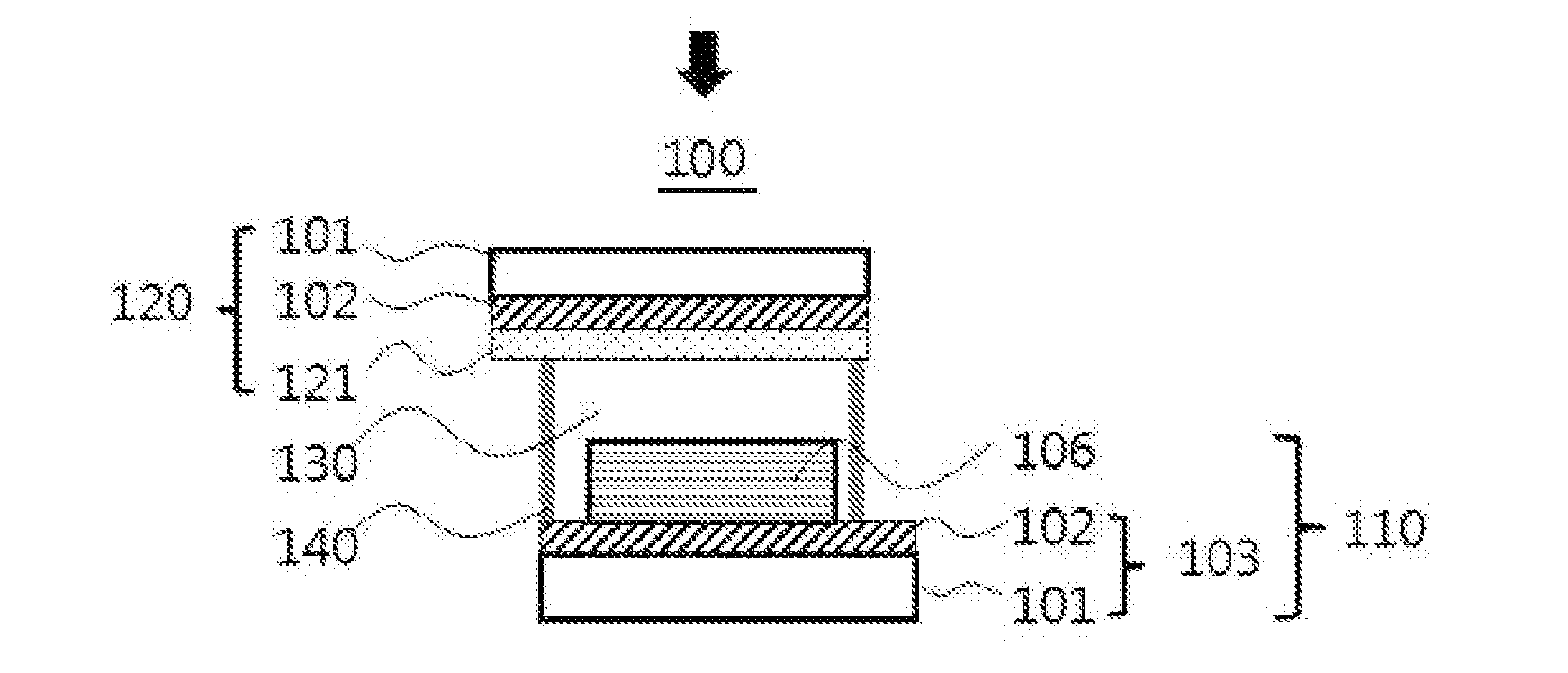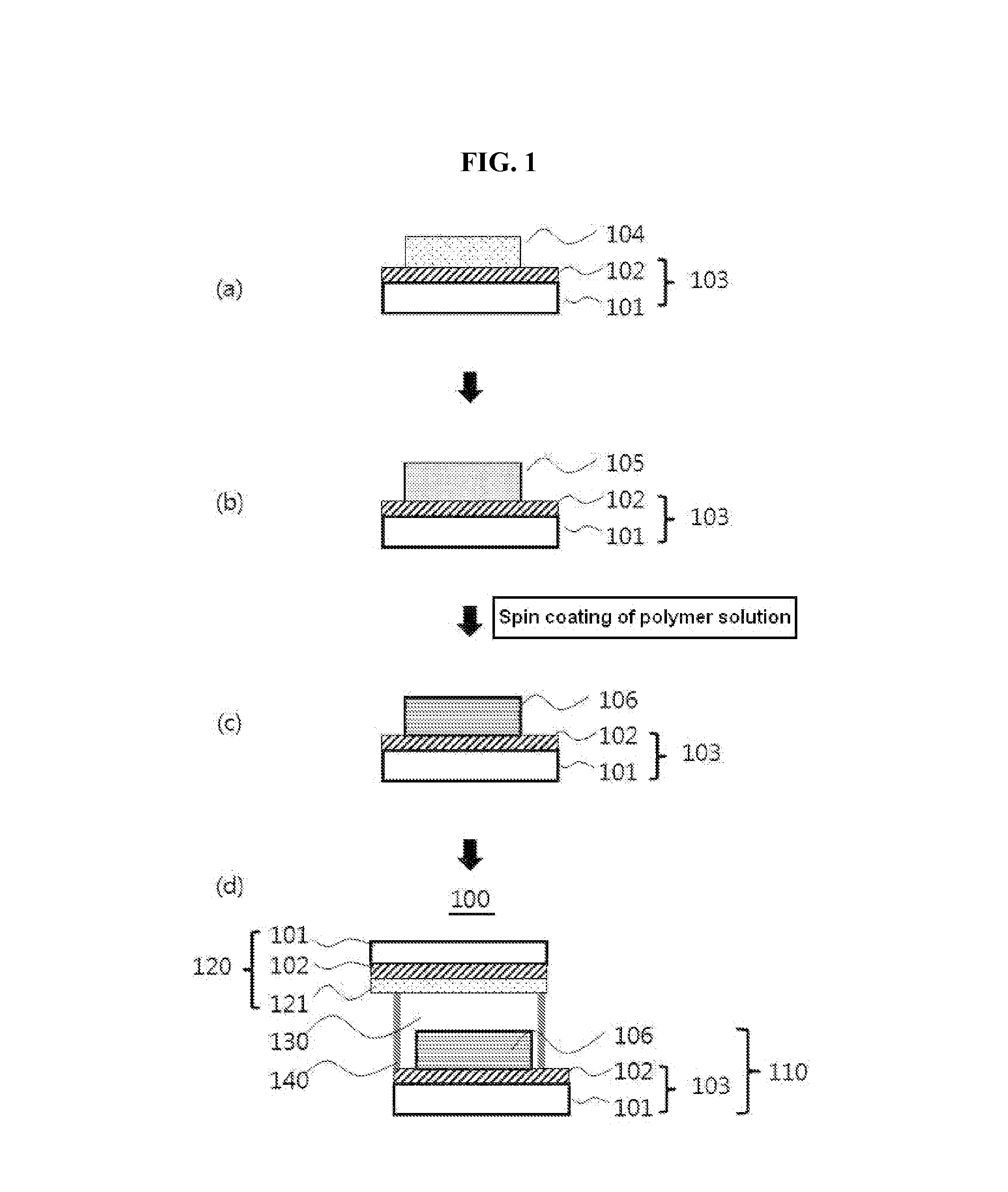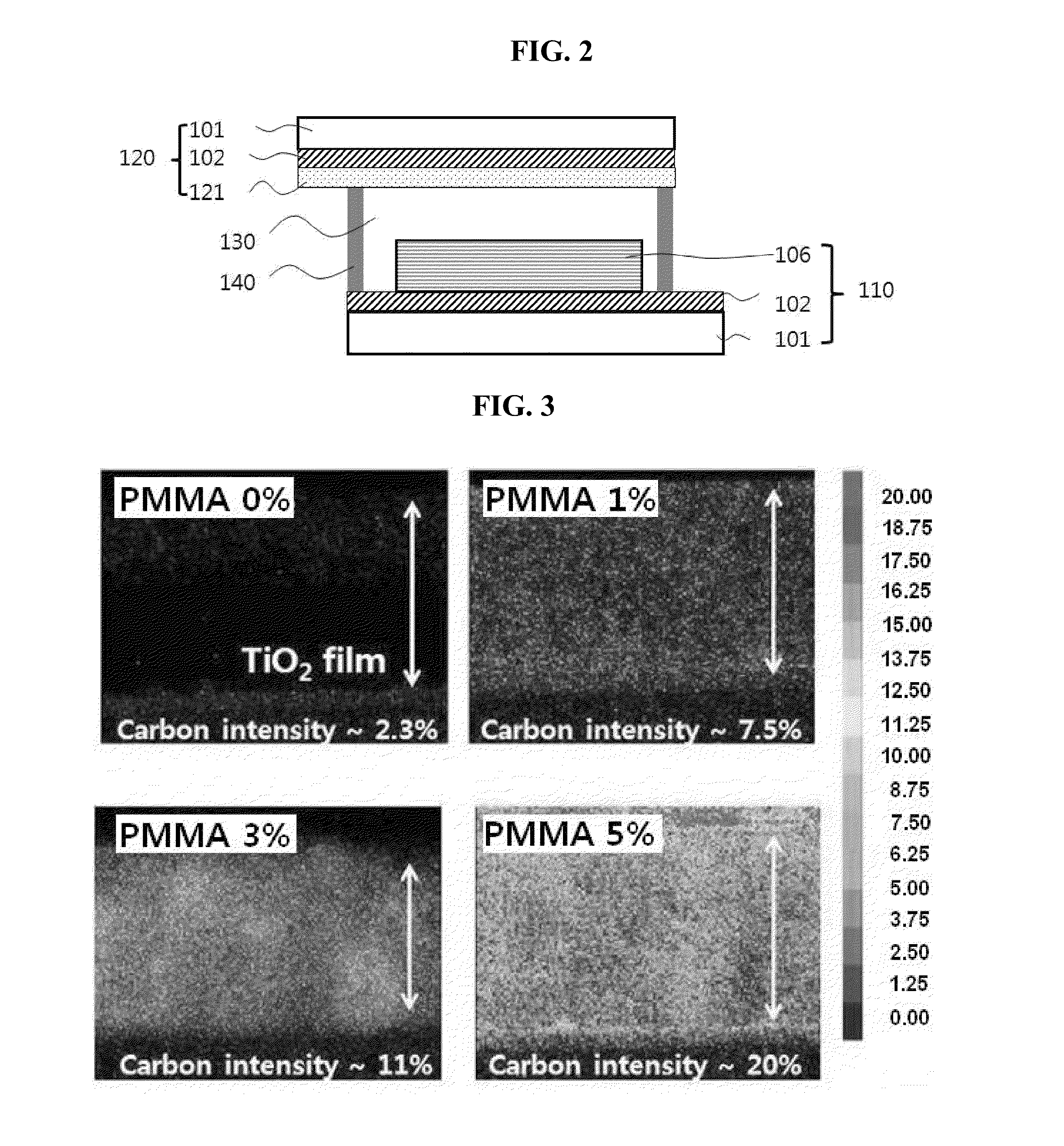Preparation method of flexible electrodes and flexible dye-sensitized solar cells using the same
a technology of flexible electrodes and solar cells, which is applied in the direction of electrolytic capacitors, sustainable manufacturing/processing, final product manufacturing, etc., can solve the problem of easy generation of cracks
- Summary
- Abstract
- Description
- Claims
- Application Information
AI Technical Summary
Benefits of technology
Problems solved by technology
Method used
Image
Examples
examples 1 to 3
Manufacture of a Photoelectrode
[0084]As a substrate for photoelectrode, a conductive plastic substrate (Peccell Technologies, Inc. material: PEN / ITO, thickness 200 μm, 15 Ω / sq, a substrate comprising (101) and (102) of FIG. 2) was prepared. Subsequently, a solution formed by dispersing 8 g of TiO2 nanoparticles (average diameter 20 nm) in 200 ml of ethanol was agitated (40 minutes / 450 rpm) with a mechanical agitator to prepare a uniform colloidal solution. To increase the viscosity of the solution, the solvent was distilled at 50° C., 170 rpm using a rotary evaporator to prepare a paste. The paste was coated on a plastic substrate (ITO / PEN) by doctor blade method, and then, heat treated at 100° C. for 2 hours to remove the solvent thus manufacturing an electrode with a thickness of 6 μm.
[0085]Subsequently, the complex electrode was impregnated with an ethanol solution comprising 0.5 mM of ruthenium (Ru) type photosensitive dye N719 (bis(tetrabutylammonium)-cis-(dithiocyanato-N,N′-bi...
examples 4 to 6
Manufacture of Photoelectrode
[0091]As a substrate for photoelectrode, a conductive plastic substrate (Peccell Technologies, Inc. material: PEN / ITO, thickness 200 μm, 15 Ω / sq, a substrate comprising (101) and (102) of FIG. 2) was prepared. Subsequently, a solution formed by dispersing 8 g of TiO2 nanoparticles (average diameter 20 nm) in 200 ml of ethanol was agitated (40 minutes / 450 rpm) with a mechanical agitator to prepare a uniform colloidal solution. To increase the viscosity of the solution, the solvent was distilled at 50° C., 170 rpm using a rotary evaporator to prepare a paste. The paste was coated on a plastic substrate (ITO / PEN) by doctor blade method, and then, heat treated at 100° C. for 2 hours to remove the solvent thus manufacturing an electrode with a thickness of 6 μm.
[0092]Subsequently, the complex electrode was impregnated with an ethanol solution comprising 0.5 mM of ruthenium (Ru) type photosensitive dye N719 (bis(tetrabutylammonium)-cis-(dithiocyanato-N,N′-bis(...
experimental example 1
[0113]To examine distribution degree of polymer in the metal oxide nanoparticles, polymer dispersion degrees of the flexible photoelectrodes of the dye-sensitized solar cell of Examples 1 to 3 and Comparative Example 1 were measured using carbon EPMA (electron probe micro-analyzer). The results are shown in FIG. 3. As shown in FIG. 3, in Comparative Example 1 which does not comprise polymer (PMMA), carbon density is low and polymer is not distributed. To the contrary, when coating is progressed with a solution comprising 1 to 5 wt % of polymer (PMMA) as Examples 1 to 3, carbon density is increased and polymer is uniformly distributed. Therefore, the polymer may support dye-adsorbed metal oxide nanoparticles, and thus, if external force is applied to the substrate, excellent photoelectric conversion efficiency may be maintained due to excellent durability and impact resistance.
PUM
| Property | Measurement | Unit |
|---|---|---|
| diameter | aaaaa | aaaaa |
| temperature | aaaaa | aaaaa |
| thickness | aaaaa | aaaaa |
Abstract
Description
Claims
Application Information
 Login to View More
Login to View More - R&D
- Intellectual Property
- Life Sciences
- Materials
- Tech Scout
- Unparalleled Data Quality
- Higher Quality Content
- 60% Fewer Hallucinations
Browse by: Latest US Patents, China's latest patents, Technical Efficacy Thesaurus, Application Domain, Technology Topic, Popular Technical Reports.
© 2025 PatSnap. All rights reserved.Legal|Privacy policy|Modern Slavery Act Transparency Statement|Sitemap|About US| Contact US: help@patsnap.com



